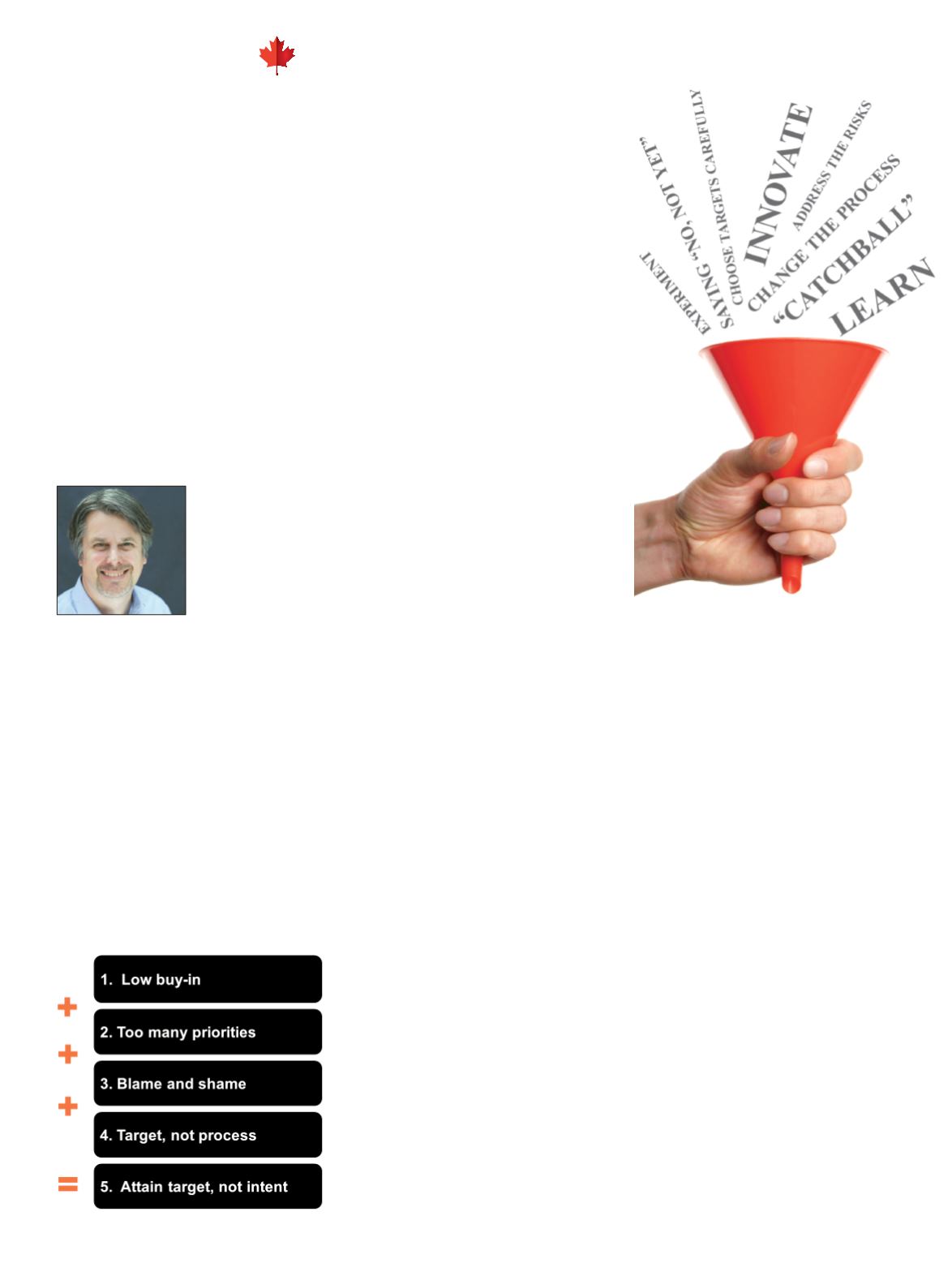

18
/ Canadian Government Executive
// September 2016
Deliverology
(a.k.a. Deliverology)
Strategizing for
“Results and Delivery”
Craig
Szelestowski
T
op-down, target-driven service
improvement initiatives like De-
liverology intuitively make sense
to most public sector leaders:
Set a target, create a plan, follow-up and
adjust as necessary. In reality the results
have been mixed. While these approaches
offer some useful advantages, there are
five key challenges to executing them ef-
fectively to attain long-term improved
delivery to citizens. The Lean approach to
strategy deployment provides a set of solu-
tions to overcome these challenges, most
of which are within the direct control of
the organization.
Challenge 1:
Low-buy-in
Deliverology has often been implemented
top-down without sufficiently engaging
front-line staff, or middle management,
in the planning process. Without their in-
put and ownership of the strategy to meet
the target, new initiatives often meet re-
sistance and are very difficult to sustain.
Front-line staff see what happens on the
ground every day and have insights that
executives do not—changing the delivery
strategy without fully engaging front-lin-
ers can put the brakes on delivering de-
sired change. If the implementers do not
own the plan, how likely is it that they will
implement it effectively? “In the history
of the world, nobody has ever washed a
rented car” Ownership is important.
Solution:
“Catchball”
“Catchball” is a structured approach in
Lean Strategy Deployment where “the per-
son who initiates a project [most common-
ly a manager] articulates the purpose, ob-
jectives, and other ideas and concerns and
then ‘throws’ them to other stakeholders for
feedback, support and action”. (This insight
is from Don Tapping and Tom Shuker, Val-
ue StreamManagement for the Lean Office:
Eight Steps to Planning, Mapping and Sus-
taining Lean Improvements in Administra-
tive Areas (CRC Press 2003). Following the
systemized approach of “Catchball”, senior
leadership identifies and shares with levels
below them a measurable “Must-Do, Can’t
Fail A to B” goal and demonstrate why the
goal is important.
Leaders include their thinking on the
root causes of the problem that needs to
be solved with an incomplete summary
of the plan to achieve the goal. Essentially
leaders ask staff: “What are your thoughts
about how to get to this goal?” and “what
would prevent us from reaching it?” Back
and forth, like tossing a ball between the
two groups, a better understanding of the
issues is created, improving the quality of
the solution and building ownership with
the people who will ultimately be expect-
ed to execute the plan.
Challenge 2:
Too many
priorities.
High levels of ownership, however, don’t
guarantee success if your organization is
overloaded with priorities. Although the
Deliverology approach attempts to create
laser-like focus in assessing and managing
the capacity of the organization to reach
the target, many organizations simply
add Deliverology activities to the existing
workload without eliminating other pri-
orities. If Deliverology targets are seen as
something in addition to the regular work,
then people will become overwhelmed.
If everything is important, then nothing
is really important. The result? Poor ex-
ecution, low morale and more effort spent
managing multiple priorities than spent
actually delivering them. Studies have
shown that a team pursuing one priority
will spend close to100 percent of its avail-














